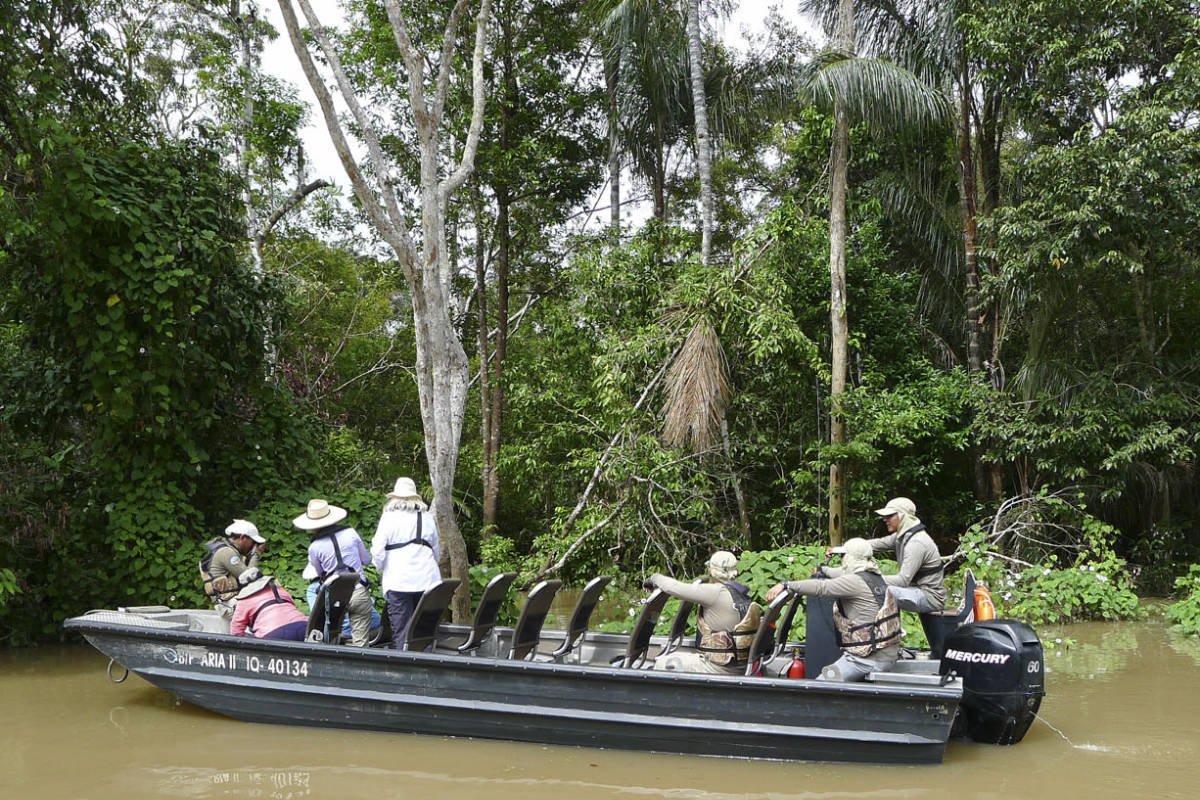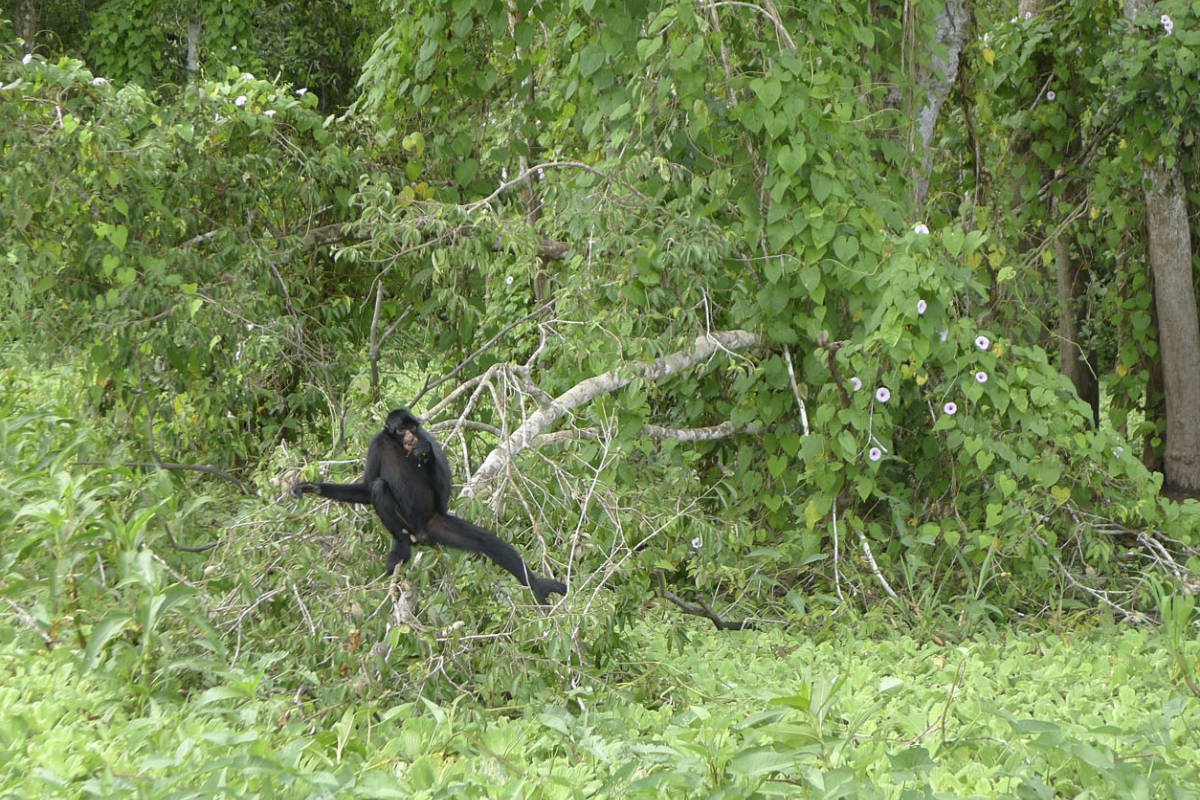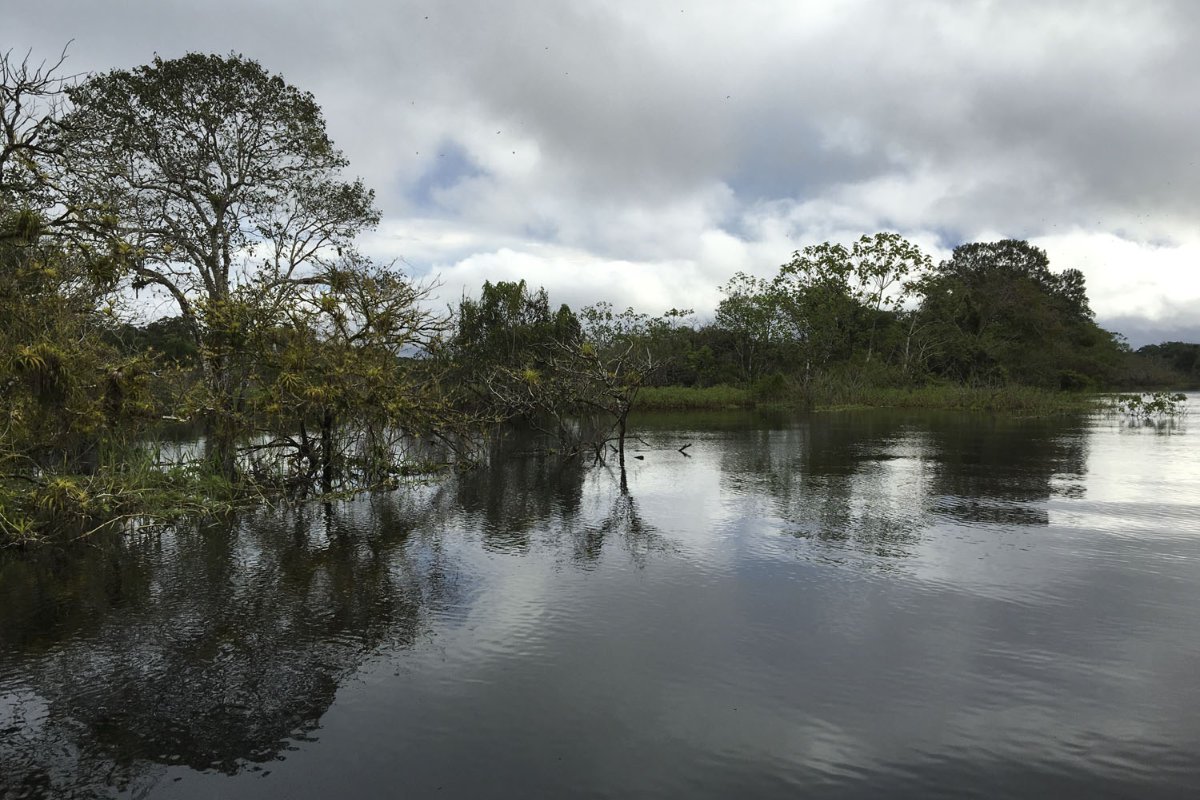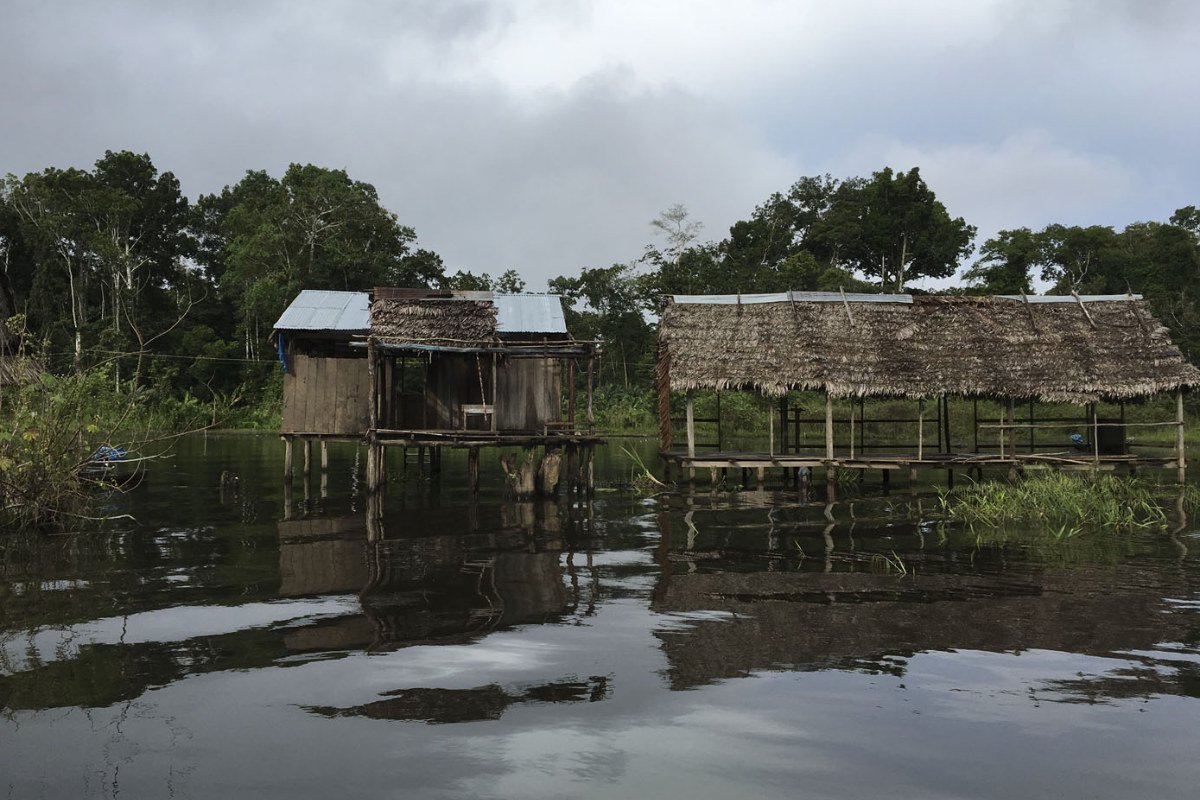An Unexpected Adventure in the Amazon Rainforest
 The vast Amazon River. All photos by Pavia Rosati.
The vast Amazon River. All photos by Pavia Rosati.
A river cruise down the Amazon River with Aqua Expeditions turned out to be educational in very unexpected ways.
THE PERUVIAN AMAZON - This is a story about nature and exploration and ecology and luxury and monkeys and rivers and dolphins and civilization and history.
But first, let’s talk about exaggeration.
We live in a show-offy era. Where every experience, every meal, every day at the beach has to be “OMG, the best ever,” and social media has been reduced to an endless buffet of humanity living its best life. (You used to like your friends before you started following them on Instagram, right?) When was the last time you heard somebody say that an experience was, “pretty good!” and mean it in a good way? Never. Or not since 2002.
This pomposity of grandiosity has also infected our vacations, which – have you noticed? – in recent times have assumed the burden of needing to be classified as “life-changing.” It’s not enough for a trip to the Mediterranean or the Masai Mara to earn a label as simple as “best ever.” Now they have the added pressure of having to be life-changing.
Look, I may not know everything, but I do know that if ten days on a Greek island or a brief encounter with a rhino is all it takes to change your life, then you seriously need to question the choices you made before you landed in Athens or Nairobi.
Which brings me, naturally, to a boat trip I took a few years ago down the Peruvian Amazon with Aqua Expeditions.
I’m not an easy boat person. Anything more sophisticated than a pedalò on a calm sea makes me a little anxious. (Please don’t get me started on those giant, wasteful, ecology-destroying floating malls they call cruise ships, which will be at the top of my list to sink to the bottom of the seas as soon as someone makes me Thoughtful Boss of Everything.) I do love being on and in the water; I’m just not as comfortable stepping onto a deck as I am breezing into a hotel room.
But a few years ago, I stuffed my hesitations and accepted an invitation on the Aria Amazon for a three-day exploration of the mighty Amazon and its rainforest and its many tributary rivers — Ucayali and Marañon (the spot where these rivers merge is the birthplace of the Amazon), as well as Yarapa, Yanallpa, Dorado, and others waterways — in a way that I could never do on terra firma.



I landed at Iquitos airport after a layover in Lima, drove through town, and set sail. The Aria Amazon is less a tight, not-an-inch-to-waste yacht and more a floating boutique hotel. Sixteen cabin suites spread on two floors have comfy, king-sized beds, a living area, full-sized bathrooms with showers, and, best of all, floor-to-ceiling windows. (I never took my eyes off what was happening outside, and you won’t either.) Suites can be combined to make for family-friendly suites, and the ship can accommodate 32 people, but we were no more than 20. We were tended to by a staff of 24, four of whom were the English-speaking naturalist guides. Roger, Miguel, Alex, Luis Miguel were a highlight of the trip for their stories, humor, and encyclopedic knowledge of the nature they grew up in and had been learning about from their grandparents since they were born. (Luis Miguel's photos would put National Geographic photographers to shame.) Stewards Percy, Omar, Oscar, and Alberto kept everything ship-shape, also with terrific humor (and in a second language to them, which never fails to impress me). I used to roll my eyes at the thought of towels shaped into animals (really? Why did this ever become a thing?), but I can’t lie: While I never considered brown towels and white washcloths remotely interesting, I was always delighted to come back from excursions to find terry cloth turtles and sloths hanging out on my bed.





The upper deck was filled with sink-into-me sofas and chairs that could be rearranged into impromptu conversation pits. A wraparound balcony surrounded the living room; a hot tub sat at the bow, along with outdoor sofas. The dining room was spacious, with options for group tables or individual dining.
As for the food — how can I put this nicely? — it was so much better than I had expected! Breakfast, a meal I don’t eat, was an exploratory education of dazzling local fruits that were new to me — anona, macambo (the “monkey brain” nut), camu camu juice. (With apologies to Jersey peaches and New York apples, North American fruit can’t hold a candle to the Equatorial bounty.) Lunch was a grand buffet — Amazon shrimp summer rolls with spicy sauce, sauteed paiche fish in coconut-turmeric sauce, starfruit and brazil nut crumble. Dinner was plated courses — pan-seared trout with caper butter and mashed fava beans, slow-cooked sirloin with stewed potatoes and peanuts, wild Andean blueberry trifle. I tip my hat to executive chef Pedro Miguel Schiaffino. He wasn’t making do with limited options; he and his team were serving terrific fare.
A small blackboard outlined the daily schedule: 6 a.m. wakeup, morning excursions into the Amazon, back on board for lunch and a presentation — a ceviche cooking lesson, a nature lecture, and even an animal-towel-making demo (I took videos, but my sloth game is weak) — followed by an afternoon excursion, then back to the boat for dinner. The schedule was lighter than it might sound, which meant there was plenty of time to read a book in the open air or have an excellent massage. Most of the time, I just gazed out onto the river and the horizon, marveling at the cloudscape overhead and the different colors of swirling waters below, hoping to spot pink dolphins jumping in the currents.





As for the excursions. Wow. We set off on light skiffs in small groups to go deeper into the Amazon. Into the Pacaya Samiria National Reserve, five million pristine acres at the headwaters of the Amazon basin, where we looked for sloths and parrots and macaws and different species of monkeys, all as playful as the clichés about them. Jungle of Mirrors is the appropriate name for the area of the Dorado River where trees are reflected in the water to mesmerizing effect.
Aqua Expeditions had given us a wildlife checklist where we could track the mammals, birds, amphibians, reptiles, insects, and plants as we found them — there were about 350 listed by common name, scientific name, local name, and the probability of seeing them in low- and high-water seasons. (While 350 might seem like a lot, and it is, it’s worth noting that the Amazon rainforest is home to one-third of all known animal species on Earth.) We were equipped with binoculars, but the guides didn’t need them, usually spotting with the naked eye what our magnified vision missed.






Alex pointed out a giant termite nest hanging from a tree. Termites! A little dangerous. Not to Alex, who soon had them crawling on his hand as he explained their role in the ecosystem. (I let one crawl onto my finger. And clearly lived to type this report.) We fished for piranhas. (We released.) On a moonlit excursion, another guide caught a caiman lizard (scientific name: dracaena guianensis; common name: camaléon negro). It let us check it out and take pictures, then swam off. Thanks, caiman!
The Amazon is vast, but not as overpowering as I had expected. I had arrived with a mental picture of towering tree canopies, a riot of bird song and animal calls. What we saw was low-lying and quiet. Lush. Green trees, brown water. If a rainforest can have a personality, this one wasn't shouting "look at me." Its very modesty was gentle. Nighttime was enchanting.







We visited a local village, saw the school and the community. Before the trip, we had been advised that we could bring first air goods, notebooks, colored pencils, and school supplies for the children, so I filled my suitcase and handed everything to the teacher to distribute. After the kids sang a song for us, we were taken onto Lake Clavero in the wooden canoes of local residents. I paddled with a feisty tween and her patient mother. (They didn’t join me for a swim in the cool waters of lake.)
We were walking a fine line between engaging with the community and poverty tourism. I feel more than a little guilty about the whole experience, and especially the selfies I took with the kids. Aqua Expeditions works closely with the communities in the area and hires local staff – these are salaries that make a huge impact on families. But did these villagers really want 20 Westerners traipsing through their town, gawking at them and taking pictures? While I was truly glad that I saw how the people of the Amazon live, I feel a little uneasy about how I saw it.
The river cruise follows one route during low-water season and another in high-water season. On one of our first excursions, we passed an abandoned compound — a few raised platforms on stilts, triangular thatched roofs falling apart, crates scattered about. I was confused. Where were the people? Alex explained that when the river rises, settlements like this one need to be abandoned for higher ground. The inhabitants might return when waters recede, or they might find new homes.
“So they just pack up and leave their homes?” I asked. Yes. In a similar vein, the routes that Aqua Expeditions sails vary according to the seasons, because they too have to follow the changing river.

This was a revelation. I thought of my apartment, and all the stuff I’ve accumulated in my decades. The baby photos and high school yearbooks and ex-boyfriend jeans. My grandmother’s china, my mother’s jewelry, the paintings my parents bought on their honeymoon. What would I do with it all if I had to move homes in the high waters? Nothing: I wouldn’t accumulate all this stuff in the first place.
Then I thought about the things that fill our museums, the things we value about civilizations. The Venus of Willendorf, the Egyptian hieroglyphics, the Greek amphorae, the Roman coins, the medieval armor, just to get us to somewhere in the 1300s. The people of the Amazon, in contrast, are rarely given a very respectful presence in the annals of history. I certainly never, in seventeen years of very expensive education, learned about the wisdom of the peoples and tribes who live in the Amazon, the medical miracles that have been achieved in no small part thanks to indigenous knowledge of rainforest, of the stories and myths that form the backbone of their cultures. These people are certainly not given the credit we give to those ancient Egyptians, Chinese, Greeks, Romans, and even those crusading and misguided dopes in medieval chainmail.
Those loaded terms above — “value” and “credit” — belong in self-aware quotation marks. Just because we don’t have relics we can study in history classes and look at behind glass in museums doesn’t mean that the cultures and the knowledge and the history of the Amazon — their civilization — isn’t as rich as that of the Mediterranean, with all their philosophers and sculptors and poets.
As I type these words, it all seems so painfully obvious.
And to not have realized this before seeing the abandoned homes seems even more painfully oblivious.
But I have not thought about civilization — again a word that belongs in quotation marks — the same way since. My amazing trip down the Amazon may not have been life-changing, but it was something perhaps rarer and certainly more profound: It was mind-changing.
Aqua Expeditions also runs luxury cruises on the Mekong river in Cambodia and Vietnam and in Indonesia around Raja Ampat, Komodo Islands, Ambon, and the Spice Islands. Their latest ship, Aqua Mare, launched in the Galapagos Islands in August 2022. Pavia Rosati traveled as a guest of the company.
